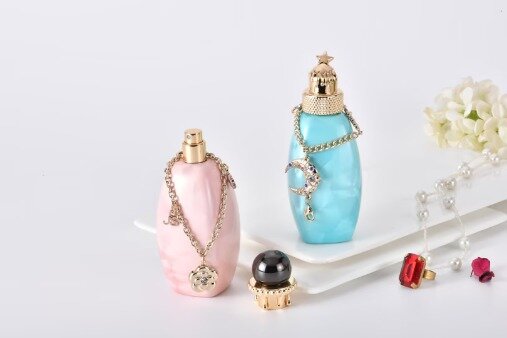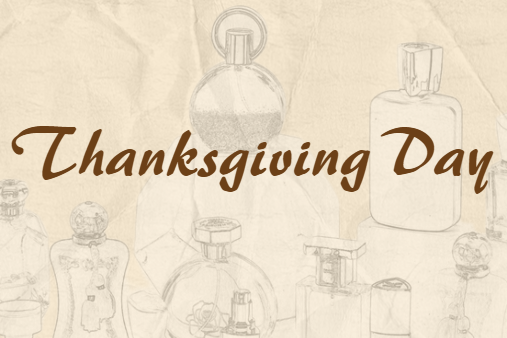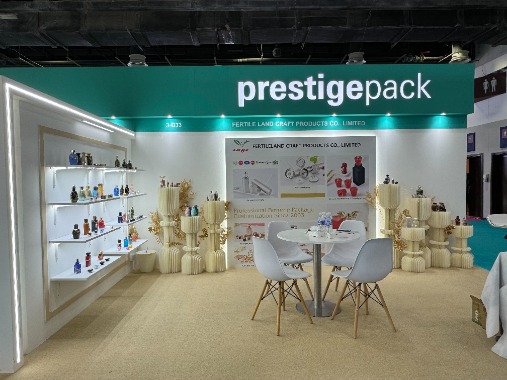Perfume bottle caps are crucial in preserving the fragrance and ensuring product safety. When it comes to designing child-resistant perfume bottle caps, there are several vital considerations that both manufacturers and consumers should be aware of. This article will explore the factors involved in creating effective child-resistant caps and the importance of prioritizing consumer safety.
Understanding the Need for Child-Resistant Perfume Bottle Caps
The fragrance industry has seen a growing demand for child-resistant packaging solutions. Perfume bottles often contain concentrated and potentially harmful substances, making it essential to protect children from accidental exposure. Young children are naturally curious and may mistake perfume bottles for toys, leading to unintended ingestion or exposure to harmful chemicals.
Recognizing this risk, regulatory bodies have established guidelines and requirements for child-resistant packaging. These regulations aim to reduce the number of accidental poisonings and ensure the safety of children. As a result, perfume bottle manufacturers must consider these legal obligations when designing their products.
Design Factors for Child-Resistant Perfume Bottle Caps
Various design factors should be considered when creating child-resistant caps to prevent children from accessing perfume bottles.
Physical barriers and mechanisms to prevent easy opening
One of the primary considerations is the inclusion of physical barriers and mechanisms that make it challenging for children to open the perfume bottle. Several lockable mechanisms have proven to be effective in achieving this goal. One such mechanism is the push-and-turn cap, which requires simultaneous pressure and rotation to unlock. This design ensures that a child’s limited dexterity and strength would make it difficult to open the bottle.
Another option is the squeeze-and-lift cap, which necessitates squeezing it while lifting it to unlock the bottle. This mechanism adds an extra layer of complexity for children, reducing the risk of accidental exposure. These lockable mechanisms act as deterrents, discouraging children from attempting to open perfume bottles without adult supervision.
Ergonomic Considerations for adult users
While the primary focus of child-resistant caps is to prevent access by children, it is equally important to consider the usability and convenience of adult users. Perfume bottle caps should be ergonomic, ensuring they are easy to grip and open for adults while maintaining their child-resistant properties.
Manufacturers must balance providing adequate resistance against children and ensuring that adults can easily access the perfume. Caps should be designed to fit comfortably in the hand, with grooves or textures that enhance grip. By incorporating user-friendly designs, manufacturers can ensure that the perfume bottle caps are safe and convenient for adult consumers.
Material selection for child-resistant caps
The choice of materials for child-resistant perfume bottle caps is crucial in ensuring durability and safety. Caps should be constructed from sturdy and reliable materials that can withstand frequent use and resist breakage. Common materials for child-resistant caps include high-density polyethylene (HDPE), polypropylene (PP), and metal alloys.
In addition to durability, it is essential to consider the materials’ toxicity. Perfume bottle caps should be made from non-toxic materials that do not pose a risk to human health. Manufacturers should prioritize using materials that are free from harmful substances such as phthalates, bisphenol A (BPA), and lead.
By carefully selecting materials for child-resistant caps, perfume bottle manufacturers can ensure that their products meet safety standards while maintaining quality and longevity.
Testing and Certification Processes
Ensuring the effectiveness of child-resistant perfume bottle caps requires rigorous testing and certification processes. These processes verify that the caps meet the required standards for child resistance and comply with regulatory guidelines. Let’s explore the critical aspects of testing and certification.
Overview of testing protocols
Testing protocols for child-resistant packaging involve subjecting the perfume bottle caps to various assessments to evaluate their resistance to child access. These tests often simulate young children’s strength, skill, and persistence. Standard tests include the “push-and-turn” test and the “squeeze-and-lift” test, where children assess caps for their ability to resist opening.
During testing, caps are evaluated based on predetermined criteria, such as the force required to open them or the time it takes for children to overcome the resistance. Caps that meet or exceed the specified thresholds are considered child-resistant.
Certification standards and organizations
To demonstrate compliance with child-resistant packaging regulations, perfume bottle manufacturers seek certification from recognized organizations. These organizations establish and enforce standards for child-resistant packaging, ensuring consistent safety across the industry. Examples of such organizations include the Consumer Product Safety Commission (CPSC) in the United States and the European Committee for Standardization (CEN) in Europe.
Certification typically involves submitting samples of the perfume bottle caps for evaluation. The caps undergo extensive testing as per the established protocols. Once the caps pass the tests, they receive certification that attests to their child-resistant properties.
By obtaining certification, manufacturers can demonstrate their commitment to consumer safety and reassure buyers.
Consumer Education and Communication
Effective consumer education and communication are essential components in ensuring the proper use and understanding of child-resistant perfume bottle caps. Let’s delve into the critical aspects of educating consumers.
Role of clear labeling and instructions
Labels and instructions are vital in guiding consumers on correctly using child-resistant perfume bottle caps. Manufacturers should provide clear and concise instructions on opening and closing the lids, emphasizing the child-resistant features. Labels should also warn about the dangers of perfume ingestion or exposure for children.
Furthermore, using universally recognized symbols or icons to convey safety information is essential, especially for consumers needing help understanding the language used in the instructions. Visual cues can enhance understanding and reinforce the importance of proper cap handling.
Retailer and manufacturer responsibility
Both retailers and manufacturers are responsible for educating consumers about child-resistant perfume bottle caps. Retailers should ensure that their staff is knowledgeable about the hats and can provide accurate information to customers. They can display educational materials or provide pamphlets that explain the child-resistant features and proper usage of the lids.
Manufacturers can also contribute to consumer education by including educational materials, such as brochures or infographics, and product packaging. These materials can highlight the importance of child-resistant caps, explain how they work, and provide additional safety tips for storing and handling perfume bottles.
By collaborating and actively engaging in consumer education, retailers and manufacturers can promote safe practices and increase awareness about the significance of child-resistant packaging.
Case Studies and Industry Best Practices
Examining successful case studies and industry best practices can provide valuable insights into the design and implementation of child-resistant perfume bottle caps. Let’s explore some examples:
Showcase of successful examples
- SecureLock Perfume Caps: SecureLock, a leading perfume bottle cap company, implemented a unique push-and-turn cap design for their high-end fragrance line. The cap’s innovative mechanism requires precise alignment during the opening, making it challenging for young children to unlock. This design has received accolades for its effectiveness in preventing accidental access while remaining user-friendly for adults.
- SafeSeal Child-Resistant Certification: A well-known perfume bottle cap supplier, SafeSeal, obtained child-resistant certification for its entire range of caps. Their commitment to safety and compliance has boosted consumer confidence in their products. SafeSeal’s caps have become a benchmark for other manufacturers striving to achieve the highest safety standards.
Highlighting innovative solutions
- SmartGuard Tamper-Evident Cap: The SmartGuard company developed a tamper-evident perfume bottle cap that complements its child-resistant design. The hat features a seal that breaks upon initial opening, indicating whether the product has been previously accessed. This dual-function cap enhances consumer trust in the product’s integrity and ensures its safety.
- Child-Resistant Closure Initiative: The fragrance industry’s collaborative initiative to improve child-resistant packaging has garnered significant attention. Multiple companies joined forces to conduct research and share knowledge on improving child-resistant cap designs. This initiative has led to advancements in child-resistant technologies and raised awareness of safety issues across the industry.
Conclusion
Designing child-resistant perfume bottle caps is a critical responsibility for manufacturers and suppliers in the fragrance industry. By understanding the need for child-resistant packaging, considering key design factors, choosing appropriate materials, and undergoing rigorous testing and certification, companies can develop caps that protect children from accidental exposure while ensuring ease of use for adult consumers.
Consumer education and transparent communication are equally vital in promoting child-resistant caps’ proper use and benefits. Industry collaboration and innovative solutions contribute to the continuous improvement of safety standards and reinforce the commitment to consumer well-being.
As the demand for child-resistant packaging continues to grow, companies must stay proactive in providing the safest and most effective perfume bottle caps to protect young lives and build trust with their customers.




